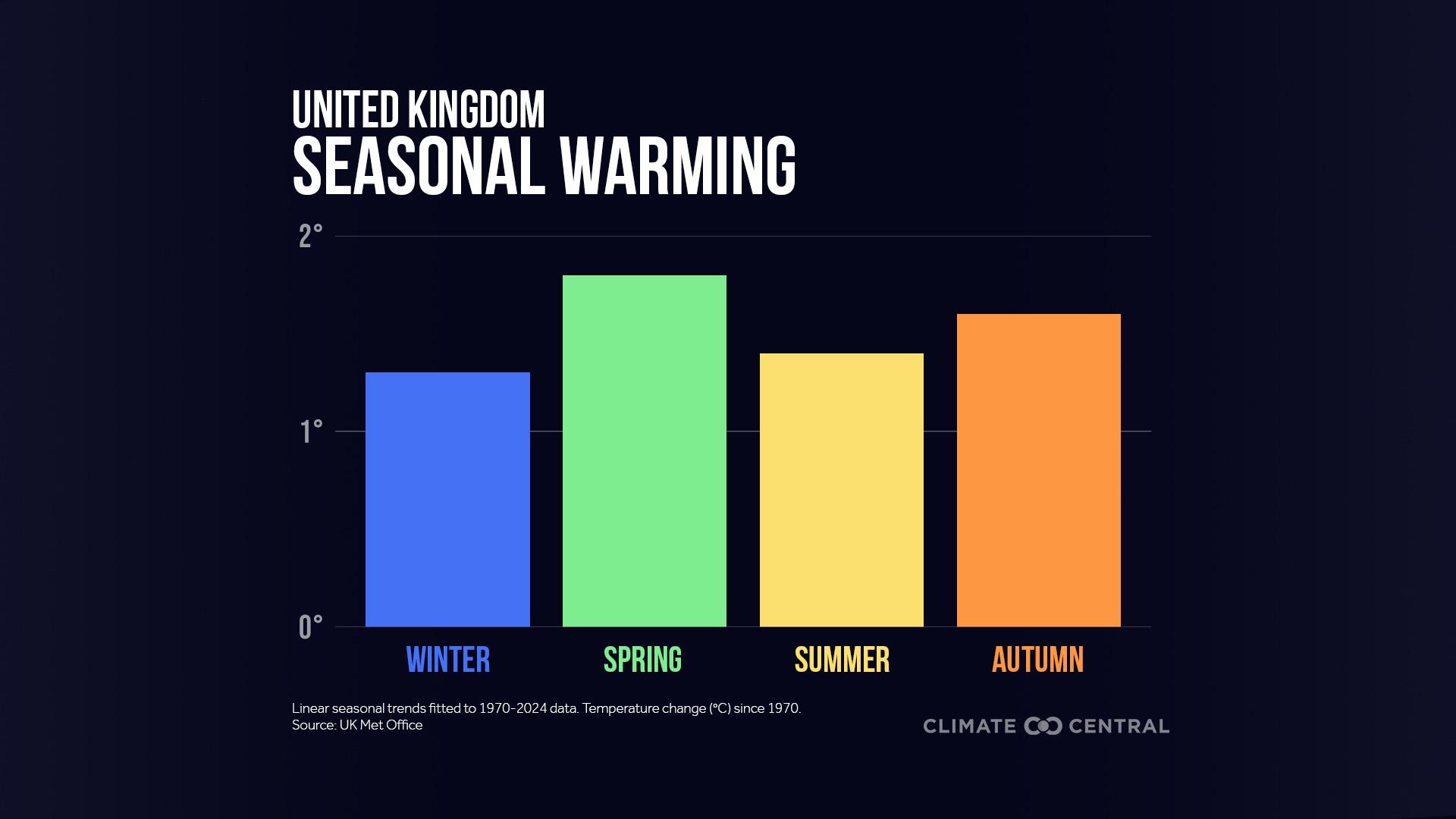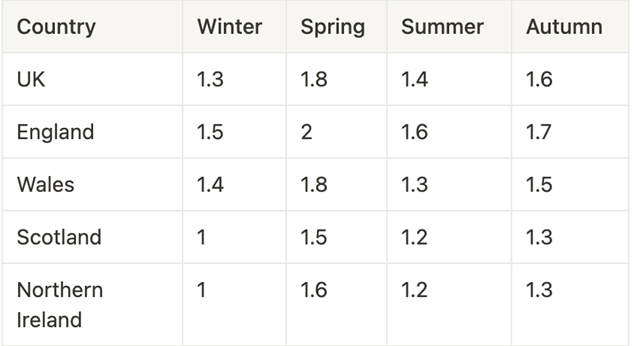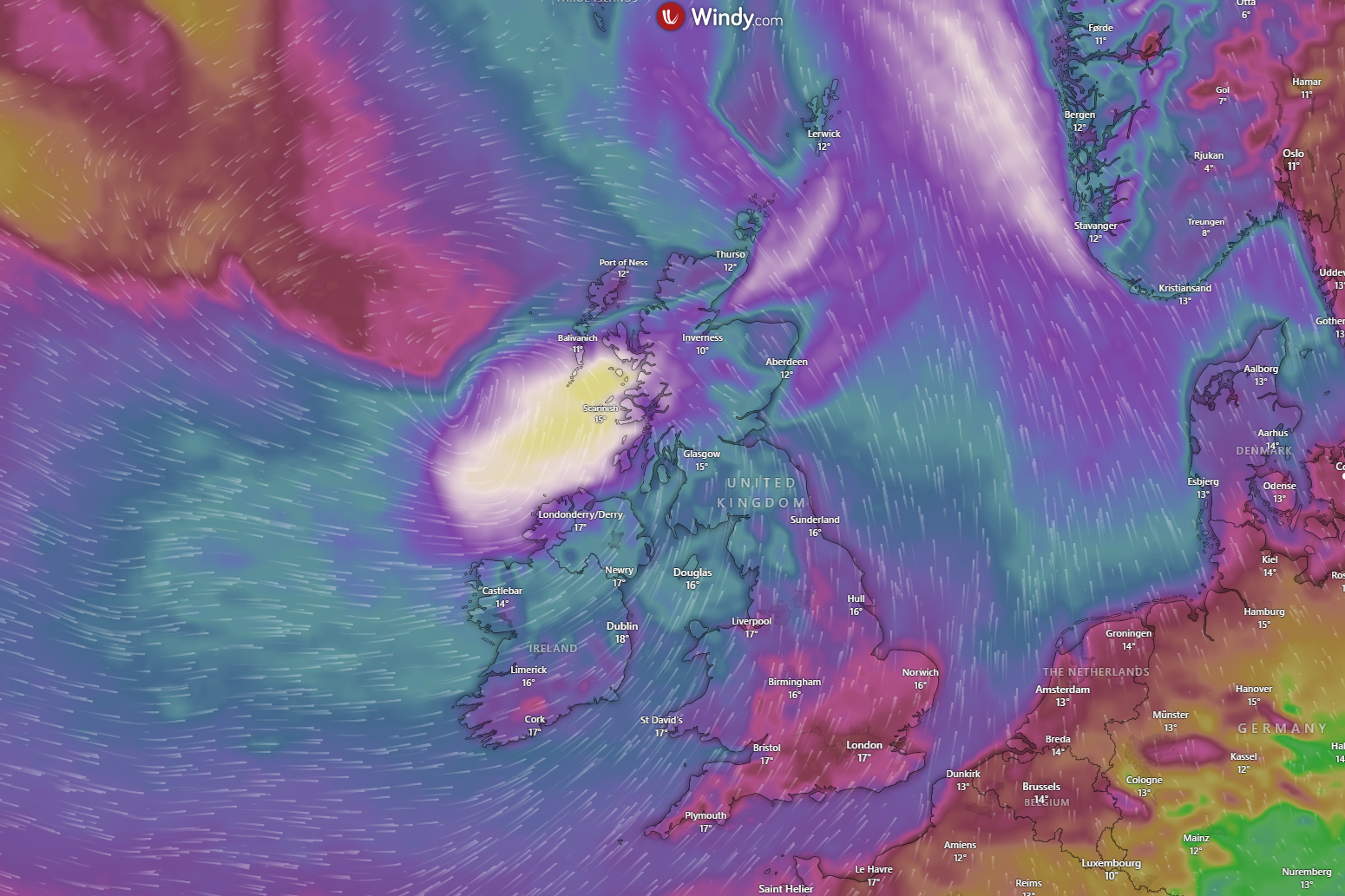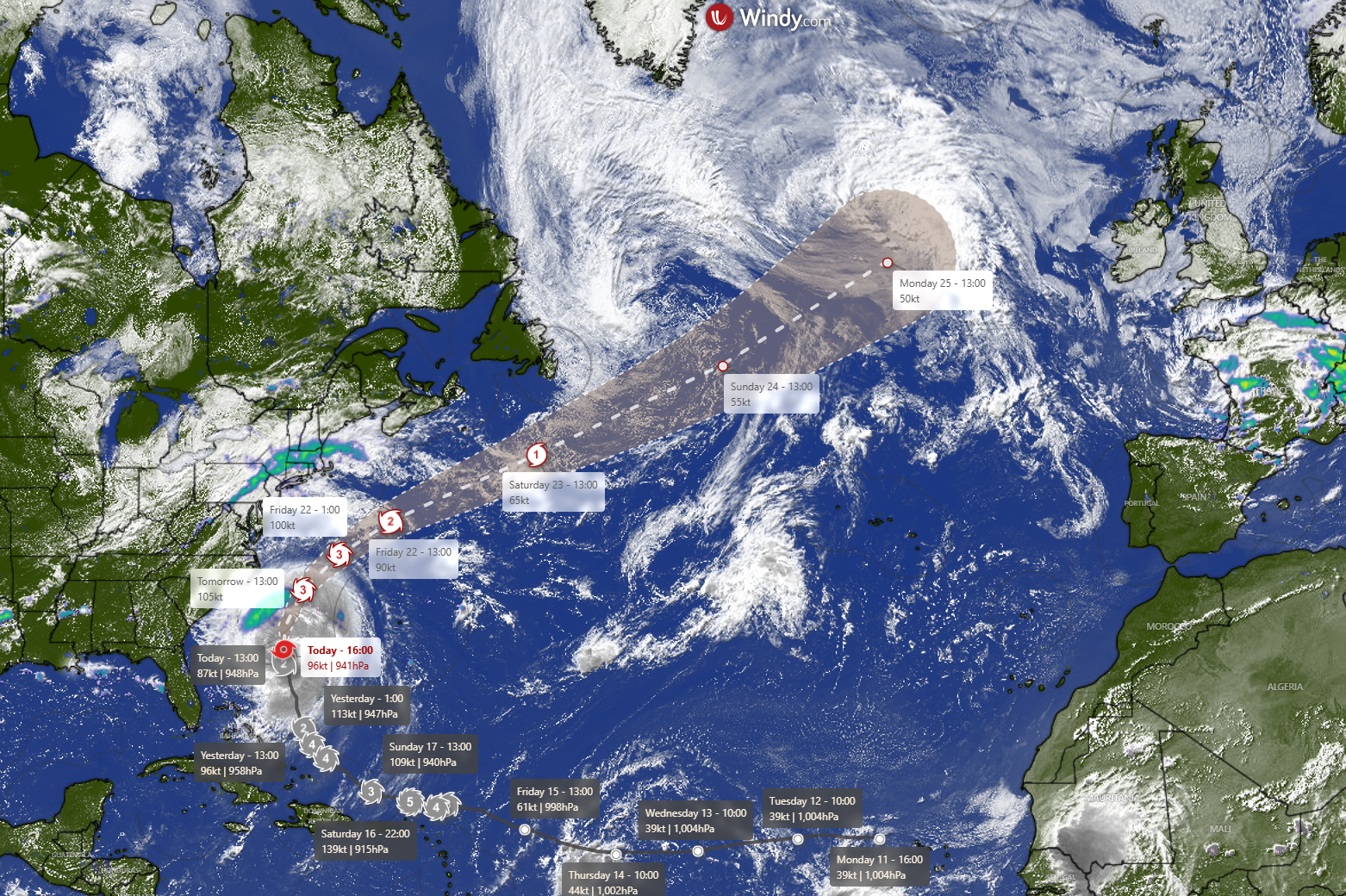

Fastest warming seasons in the UK
by Kirsty McCabe, FRMetS
Winter, spring, summer and autumn (apologies if you were about to sing “fall”). If you feel that our seasons have changed over the decades, you’re right. A Climate Central analysis reveals that all four seasons have warmed since 1970, with spring the UK’s fastest-warming season.
Our seasons do naturally vary from year to year, but global warming (linked to the anthropogenic increase in greenhouse gas concentrations in the atmosphere) is influencing long-term warming trends — affecting our health, wildlife, flowers, nature, agriculture, sports, food systems and more.
Using UK Met Office data, the Climate Central team looked at the annual average seasonal temperatures from 1970 to 2024 for all four meteorological seasons. As you probably know, meteorologists like to keep our seasons neatly quartered into parcels of 3 complete calendar months, allowing us to collate data easily and compare seasonal statistics. So spring is from 1 March to 31 May, summer is from 1 June to 31 August, autumn is from 1 September to 30 November and winter is from 1 December to 28/29 February.
As our climate heats up, all four seasons are warming, but at different rates across the UK. Spring is the fastest warming season for all four nations within the UK, with an increase of 1.8°C in average spring temperatures since 1970. England is the region with the most spring warming, with average spring temperatures increasing by 2°C since 1970.

© Climate Central
What about the rest of the year? Autumn isn't far behind, with an increase of 1.6°C in the average autumn temperature across the UK. Meanwhile the average summer temperature has increased by 1.4°C, and the average winter temperature has increased by 1.3°C. Even when broken down into England, Wales, Northern Ireland and Scotland — all four nations have seen each of their seasons warm by at least 1°C since 1970.

So what difference does a degree or two of warming make? The extra warmth means that spring blooms are now flowering as much as a month earlier, which can disrupt the timing of pollination and migration events. It can even affect hay fever sufferers, as an early spring increases the risk of a longer pollen season. Early blooms can also lead to biodiversity loss if populations can’t adapt quickly enough. And if a late frost follows a mild winter, farmers can lose entire crops.




